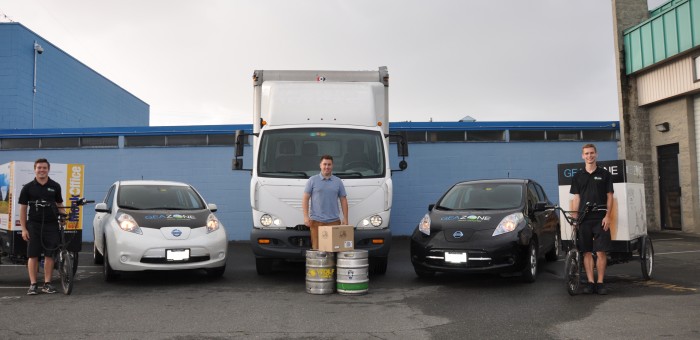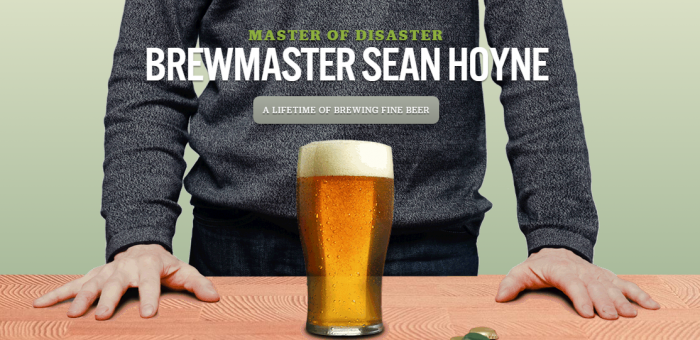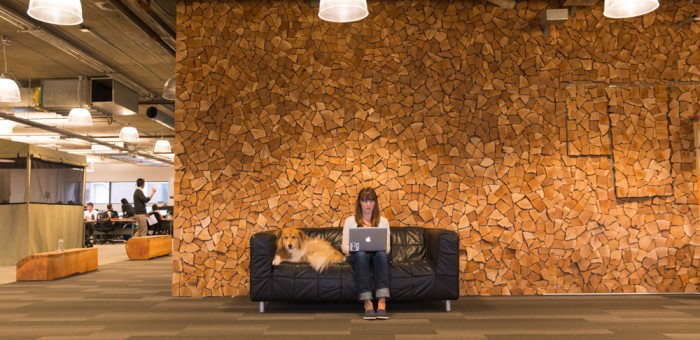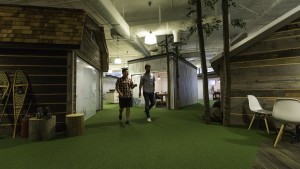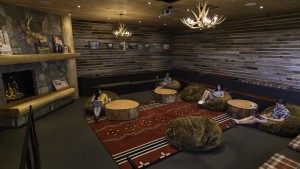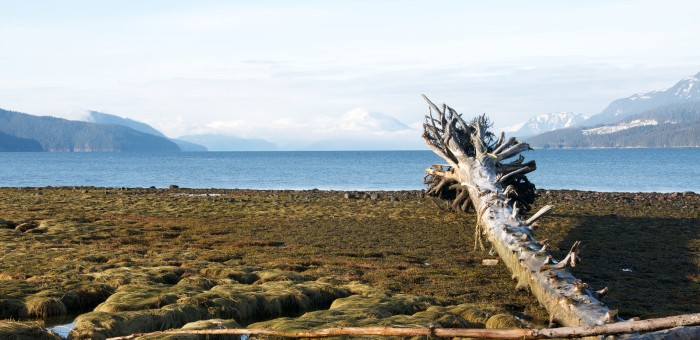Celebrating Local Businesses in Our Community – Geazone
 A four-time Canadian National Downhill Mountain Bike champion, Geazone’s president and CEO Andrew Mitchell is used to taking risks and working fast. “In downhill racing you have to live in the future, anticipating and preparing for what is around every corner on the trail,” said Geazone’s director of sales and marketing Greg Parish. When it comes to business, it seems Andrew takes the same approach.
A four-time Canadian National Downhill Mountain Bike champion, Geazone’s president and CEO Andrew Mitchell is used to taking risks and working fast. “In downhill racing you have to live in the future, anticipating and preparing for what is around every corner on the trail,” said Geazone’s director of sales and marketing Greg Parish. When it comes to business, it seems Andrew takes the same approach.
Geazone is a zero-emission courier company that uses tricycles, electric cars, and 5-tonne electric trucks to do their deliveries. On a full charge, Geazone’s electric fleet can deliver goods from Victoria to Nanaimo, and everywhere in between, without emitting a single gram of greenhouse gases. They do a Victoria to Vancouver run too, taking beer into the city and stopping to pick up hops for Victoria breweries on the way back.
Geazone presently has 100 active clients, many of them breweries, including Lighthouse, Red Arrow, Saltspring Island Ales, Wolf Brewing Company, and Hoyne. “The local beer and wine sectors seem to be the ones going green first,” said Andrew of his clients.
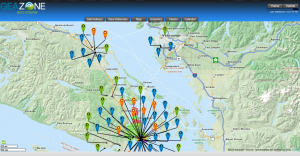 Over the course of this series it has been amazing to see so many B.C. entrepreneurs working together to support one another’s visions for business done better. When I met with Sean Hoyne, of Hoyne Brewing Company, he talked about how his brewery has partnered with Geazone to deliver their beer. “I like supporting Andrew because he is a young entrepreneur doing the right thing,” Sean told me. His praise was well deserved and wonderfully timed as I already had a meeting with Geazone booked for the following month.
Over the course of this series it has been amazing to see so many B.C. entrepreneurs working together to support one another’s visions for business done better. When I met with Sean Hoyne, of Hoyne Brewing Company, he talked about how his brewery has partnered with Geazone to deliver their beer. “I like supporting Andrew because he is a young entrepreneur doing the right thing,” Sean told me. His praise was well deserved and wonderfully timed as I already had a meeting with Geazone booked for the following month.
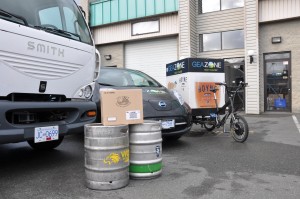 Geazone has doubled its growth every year since they opened for business in 2012. In just three years they have prevented over 100,000 kg of carbon emissions from entering the atmosphere and they don’t plan on slowing down anytime soon. Up next, they hope, is the addition of electric semi-trucks to their fleet (which can travel 160km/charge), a warehouse in Vancouver, and extra charging stations to broaden their range. “By the time people catch on we’ll be five years ahead,” said Greg.
Geazone has doubled its growth every year since they opened for business in 2012. In just three years they have prevented over 100,000 kg of carbon emissions from entering the atmosphere and they don’t plan on slowing down anytime soon. Up next, they hope, is the addition of electric semi-trucks to their fleet (which can travel 160km/charge), a warehouse in Vancouver, and extra charging stations to broaden their range. “By the time people catch on we’ll be five years ahead,” said Greg.
If Geazone replaced one of the semi-trucks delivering beer from Victoria to the British Columbia liquor distribution branch (BCLDB) in Vancouver with an electric model they would reduce carbon dioxide emissions on that route by roughly 37,000 kg per year.
Let’s take a look at the numbers:
- The round trip is about 140 km.
- The trucking industry vehicle fleets average 35-40 litres/100 km (so let’s choose 38).
- This means that on average a single round trip would use 140 km x (38 litres/100 km) = 53 litres of diesel (that would cost about $64 per trip at a price of $1.20 per litre).
- Now according to the US Energy Information Administration, 22.38 pounds of carbon dioxide are emitted during the combustion of one US gallon of diesel. This converts to 2.7 kg/litre.
- And so the average round trip in a diesel-powered truck would release 2.7 kg/litre x 53 litres = 143 kg of carbon dioxide emissions to the atmosphere.
- Now if we assume that only one trip can be made a day so that 260 trips occur each year with trucks operating only Monday through Friday, then in one year, 143 kg x 260 trips = 37,000 kg of carbon dioxide is emitted (and the annual cost of fuel would be $64 x 260 trips = $16,640).
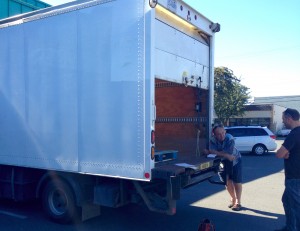
Cost-wise, their services are not more expensive than their diesel-reliant counterparts. If anything, Andrew said, they are more competitive than non-electric couriers because they don’t have to buy gas. Typical couriers will spend $80.00 or so on fuel per full day of deliveries; it costs Geazone $2.00 to charge up a Nissan Leaf for the day and $10.00 – $12.00 to charge their 5-ton trucks. Coming back to the numbers, the net annual operating savings on that return trip from Victoria to the BCLDB in Vancouver would be about $14,000 for a single truck.
That said, large courier companies do have the ability to undercut the market in a way Geazone cannot. But Andrew’s clients back him up, he said, and support Geazone because they believe in what he is doing.
The wider community in Victoria is getting on board too and the bike couriers are always a big hit at events and festivals, Andrew said. We found it amusing to learn that the Geazone team have been scolded on a few occasions by concerned citizens for leaving their trucks running while they load. “I told them it was electric but they didn’t believe me!” said Greg with a laugh. “I had to show them that the truck doesn’t even have an exhaust pipe — then they were impressed.”
Geazone is leading the way in BC with innovative zero-emission transport solutions. And at the same time, they’re saving money and creating job growth in the emerging 21st century economy.
Celebrating Local Businesses in Our Community – Hoyne Brewing Company
This is the fourth in our series highlighting innovation and creativity within our region’s business sector.
It was sweltering hot and the brewery was buzzing the afternoon we met with Sean Hoyne. As people filtered through filling growlers with their favourite beer we asked Sean to tell us about his brewery and how they got started. Though the Hoyne Brewing Company has only been open for three and a half years, Sean started their story in the 1970s – before commercial craft brewing had even begun in Canada.
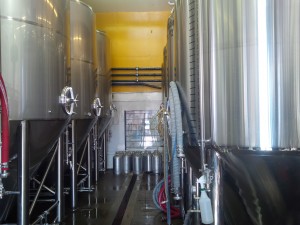 Frank Appleton, who Sean credits as the father of the craft beer movement in British Columbia, was a quality control supervisor at Carling O’Keefe’s but he had grown tired of the corporate beer scene and decided to quit in 1972. He spent the 1970s and 80s writing articles for the Harrowsmith magazine while brewing beer at his home in Edgewood, B.C. One of those articles, about the joys of home-brewing, caught the eye of John Mitchell who, at the time, was the co-owner and manager of the Troller Ale House in Horseshoe Bay.
Frank Appleton, who Sean credits as the father of the craft beer movement in British Columbia, was a quality control supervisor at Carling O’Keefe’s but he had grown tired of the corporate beer scene and decided to quit in 1972. He spent the 1970s and 80s writing articles for the Harrowsmith magazine while brewing beer at his home in Edgewood, B.C. One of those articles, about the joys of home-brewing, caught the eye of John Mitchell who, at the time, was the co-owner and manager of the Troller Ale House in Horseshoe Bay.
Mitchell had grown up in pub-rich England and was frustrated by the limited selection of beer in Canada. He tracked down Appleton and asked him if he would help him start a brewpub, a pub where good beer was both brewed and served. Far easier said than done at the best of times, Mitchell and Appleton first had to convince the local and federal governments to pass legislation that would make brewpubs legal. Previously, provincial law prohibited the public sale of beer at breweries but in 1981, after many meetings and rounds of legislation, they got approval to start brewing – and selling – their own beer from a single establishment (with the caveat that a commercial road separated the brewery and pub). Mitchell and Appleton opened Horseshoe Bay Brewery with a little store across the street on the waterfront, the first brewpub to open in North America since prohibition. From there, Mitchell and Appleton went on to open Spinnakers, Canada’s first in-house brewpub, and help dozens of other local breweries get started.
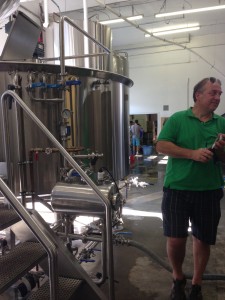 Sean enters this story, homebrewed six-pack in hand, in the late 1980s. He had a science degree to back up his beer brewing passion and he was keen to learn everything Appleton could teach him. He brought a case of homemade beer to his job interview with Appleton and let the beer speak for itself while they talked literature. Sean got the job and the two of them went on to set up the brewery in Swans Hotel in 1989. After a few years in the brewmaster role at Swans, Sean left to build the brewery at Canoe Brewpub. “I brewed there for 13 years, focusing on developing award-winning beers and fostering a sense of community between brewers and beer enthusiasts,” he said of his time at Canoe.
Sean enters this story, homebrewed six-pack in hand, in the late 1980s. He had a science degree to back up his beer brewing passion and he was keen to learn everything Appleton could teach him. He brought a case of homemade beer to his job interview with Appleton and let the beer speak for itself while they talked literature. Sean got the job and the two of them went on to set up the brewery in Swans Hotel in 1989. After a few years in the brewmaster role at Swans, Sean left to build the brewery at Canoe Brewpub. “I brewed there for 13 years, focusing on developing award-winning beers and fostering a sense of community between brewers and beer enthusiasts,” he said of his time at Canoe.
Ready to start a new chapter in a sector that was enjoying incredible public support, Sean moved into a space just outside of downtown Victoria and started to build the Hoyne Brewing Company. Starting with a team of one (himself), Sean is now one of 20 working at the brewery. In addition to serving liquor stores and customers who come into the brewery, Hoyne sells directly to bars and restaurants. They do their own deliveries, he explained, so they can provide the best service possible – even when their bottom line would recommend doing otherwise. They have partnered with Geazone, a local zero-emissions delivery service that uses electric cars and bike courriers, for their distribution. It costs more, said Sean, “but I like supporting Andrew, [Geazone’s president and CEO], because he is a young entrepreneur doing the right thing.” They even do their Victoria to Vancouver run with the zero-emissions fleet. Sean ensures two people are on each delivery run so they can share the job and help with the loading and rearranging of kegs in their drop-point’s cold room. It may seem like a simple gesture, but one that I’m sure is greatly appreciated by servers sent down to switch heavy kegs during rush hours. “We do what we can to support other businesses,” said Sean.
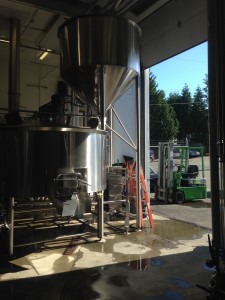 A central part of Hoyne’s mandate is to help wherever they can. It is a value system that has triggered countless positive ripple effects, both locally and abroad. They support charities (financially or with beer, where appropriate), including the Dirty Walls Project in India and source their equipment, hops, and malt from within B.C. The shiny stainless steel tanks found throughout the brewery were made on Vancouver Island and twice as expensive as their foreign-made counterparts, but the connections and collaborative friendships the brewery has made supporting local workers has made it more than worthwhile, said Sean. “If something is wrong with the tanks, they’ll be here at a moment’s notice to help out.” Local farmers are often at the brewery too, picking up loads of spent grain for their animals and gardens.
A central part of Hoyne’s mandate is to help wherever they can. It is a value system that has triggered countless positive ripple effects, both locally and abroad. They support charities (financially or with beer, where appropriate), including the Dirty Walls Project in India and source their equipment, hops, and malt from within B.C. The shiny stainless steel tanks found throughout the brewery were made on Vancouver Island and twice as expensive as their foreign-made counterparts, but the connections and collaborative friendships the brewery has made supporting local workers has made it more than worthwhile, said Sean. “If something is wrong with the tanks, they’ll be here at a moment’s notice to help out.” Local farmers are often at the brewery too, picking up loads of spent grain for their animals and gardens.
Comparing the rise of local craft breweries in B.C. with mega breweries like Molson that are now all run by non-Canadian owners (with the exception of Pacific Western), Sean attributes craft’s success with the sector’s determination to deviate from the mass-production business model. “Local craft breweries have social license,” said Sean. “They are involved in the community, transparent, open to the public, and authentic. I am in this industry because I like beer, to me it represents enjoyment and community.”
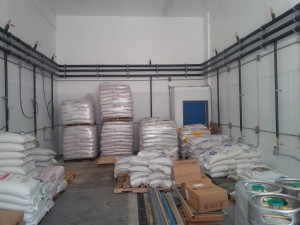 “People are always welcome to stop by our brewery,” Sean continued, “and every ingredient is listed on our bottles. We are proud of that.” As beer is not considered a ‘food product’ by the Canadian Food Inspection Agency, ingredient lists are not a requirement. Mass-produced beers, Sean explained, contain preservatives – which he stressed are not necessary unless you are selling old beer. “[At Hoyne] we don’t deliver our beer past where we can ensure it will arrive fresh so we don’t have to add anything extra, like preservatives. You can do things differently.”
“People are always welcome to stop by our brewery,” Sean continued, “and every ingredient is listed on our bottles. We are proud of that.” As beer is not considered a ‘food product’ by the Canadian Food Inspection Agency, ingredient lists are not a requirement. Mass-produced beers, Sean explained, contain preservatives – which he stressed are not necessary unless you are selling old beer. “[At Hoyne] we don’t deliver our beer past where we can ensure it will arrive fresh so we don’t have to add anything extra, like preservatives. You can do things differently.”
Sean and his team have made numerous adjustments to the status quo, from allowing their beer to naturally carbonate during the fermentation process (instead of releasing the CO2 and force-carbonating the beverage further along the production line) to building a glycol refrigeration system that allows them to cool individual tanks instead of the entire room.
As an enthusiastic supporter of the entire local craft beer sector, it was a pleasure to see the process in action and learn more about Hoyne’s community-based business model. Though I opted out of the taste-testing portion of my visit, because I was driving and had a CBC interview immediately afterwards, I already knew from experience that Hoyne’s Devil’s Dream IPA is one of my favourites.
Celebrating Local Businesses in Our Community – Hootsuite
This is the third in our series highlighting innovation and creativity within our region’s business sector.
Transitioning 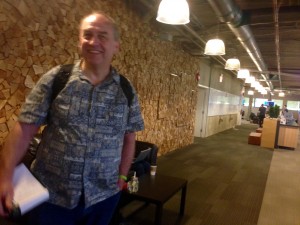 With offices in Vancouver, San Francisco, London, Paris, Hamburg, Sao Paulo, Singapore, Boston, Bucharest, and more than 11 million users, including 744 of the Fortune 1000 companies, Hootsuite is the world’s most widely used social media management platform. And it started right here in British Columbia.
With offices in Vancouver, San Francisco, London, Paris, Hamburg, Sao Paulo, Singapore, Boston, Bucharest, and more than 11 million users, including 744 of the Fortune 1000 companies, Hootsuite is the world’s most widely used social media management platform. And it started right here in British Columbia.
When discussing alternatives to an economy fixated on oil and gas I turn to a vision of a province that fosters growth in a diverse range of industries, including nascent sectors like clean tech, bio tech, and high tech. British Columbia has a highly educated workforce that is prepared to take up the challenge and capitalize on the opportunity that transitioning to a 21st century economy presents. We have beautiful cities that talented individuals from around the world want to live in and the potential to increase our renewable energy production to support companies striving to lower their carbon footprint.
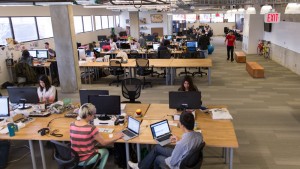 While it is easy to talk about these concepts theoretically, it was a great pleasure to see them in action when I visited Hootsuite headquarters in Vancouver last month. Hootsuite is a program that allows people and businesses to manage their social media programs across multiple social networks from one integrated dashboard. In essence, it organizes your social media presence, say on Twitter, Facebook, and LinkedIn, onto one screen that allows you to monitor and post content efficiently.
While it is easy to talk about these concepts theoretically, it was a great pleasure to see them in action when I visited Hootsuite headquarters in Vancouver last month. Hootsuite is a program that allows people and businesses to manage their social media programs across multiple social networks from one integrated dashboard. In essence, it organizes your social media presence, say on Twitter, Facebook, and LinkedIn, onto one screen that allows you to monitor and post content efficiently.
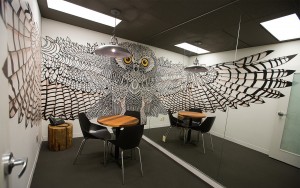 Hootsuite has grown incredibly fast since it was founded in 2008. When it first began the average employee age was 26. That has increased slightly over the years, of course, and with a global staff of 800 and counting the average age is now around 36. It is a young, energetic company that supports the community they have created and the values they share. The health and well-being of Hootsuite employees is clearly a priority and their Vancouver offices have a gym, fitness studio, music room, and nap room, which staff are free to use any time of day or night. There are yoga classes held in the studio five times a week and employees are encouraged to ride their bike to work. A healthy work-life balance, they say, is key. Not surprisingly, they also have a 96% employee retention rate.
Hootsuite has grown incredibly fast since it was founded in 2008. When it first began the average employee age was 26. That has increased slightly over the years, of course, and with a global staff of 800 and counting the average age is now around 36. It is a young, energetic company that supports the community they have created and the values they share. The health and well-being of Hootsuite employees is clearly a priority and their Vancouver offices have a gym, fitness studio, music room, and nap room, which staff are free to use any time of day or night. There are yoga classes held in the studio five times a week and employees are encouraged to ride their bike to work. A healthy work-life balance, they say, is key. Not surprisingly, they also have a 96% employee retention rate.
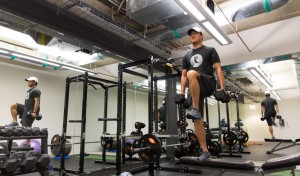 Along with caring for their staff, Hootsuite also tries to contribute to the larger community. They hold 200 events, workshops, and lectures annually. Millions of non-profits and small businesses are provided with discounted services and training to help them maximize their social media impact. Hootsuite has provided free social media education to thousands of students through their Higher Education Program and Hootsuite CEO Ryan Holmes co-founded The Next Big Thing, a nonprofit foundation that “empowers young entrepreneurs with the peer and mentor network, alternative education, work space and technology they need to succeed.”
Along with caring for their staff, Hootsuite also tries to contribute to the larger community. They hold 200 events, workshops, and lectures annually. Millions of non-profits and small businesses are provided with discounted services and training to help them maximize their social media impact. Hootsuite has provided free social media education to thousands of students through their Higher Education Program and Hootsuite CEO Ryan Holmes co-founded The Next Big Thing, a nonprofit foundation that “empowers young entrepreneurs with the peer and mentor network, alternative education, work space and technology they need to succeed.”
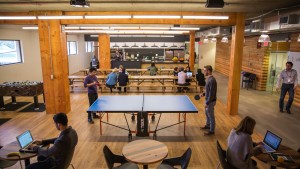 Having a minimal environmental impact has been foundational to Hootsuite since the beginning. Their office is largely paper-free, they use energy efficient appliances and lights, have teleconferences to reduce travel emission, source the food (and beer) in the kitchen locally when possible, and have a workforce that largely commutes by bike or transit.
Having a minimal environmental impact has been foundational to Hootsuite since the beginning. Their office is largely paper-free, they use energy efficient appliances and lights, have teleconferences to reduce travel emission, source the food (and beer) in the kitchen locally when possible, and have a workforce that largely commutes by bike or transit.
Hootsuite tries to look at business more holistically than just revolving around shareholders, they say, which in turn, actually creates more value for shareholders. A recent milestone in their quest to use business as force for good, Hootsuite is now a certified B-Corporation. There are currently over 1,300 certified B-Corps across 41 countries and 121 industries that are leading a global movement to redefine success in business by voluntarily meeting higher standards of transparency, accountability, and performance. B-Corps aim to use business as a solution for social and environmental problems.
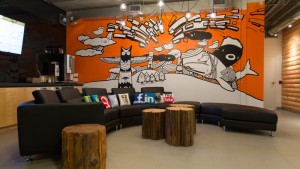 I asked representatives at Hootsuite if complying with the rigorous B-Corp standards for environmental and social excellence was difficult for the company, but they said “actually, we were already meeting a lot of their requirements.”
I asked representatives at Hootsuite if complying with the rigorous B-Corp standards for environmental and social excellence was difficult for the company, but they said “actually, we were already meeting a lot of their requirements.”
They began measuring their environmental footprint across all offices, implemented emission reduction plan, and evaluated the diversity of their workforce. After all, they said, “you can’t manage what you don’t measure and the B-Impact assessment compels companies to identify areas for improvement. It provides guidance for what companies should pay attention to.”
Hootsuite is setting a wonderful example for businesses in B.C., demonstrating that companies do not need to compromise their environmental and social values for the sake of their bottom line. “We became a B-Corp because we were looking for a way to measure our impact and see how we stacked up against other socially conscious companies,” said the company’s CEO.
As we transition to a diversified 21st century economy, I hope more B.C. companies will follow suit and be supported as they align with this admirable business model.
Celebrating Local Businesses in Our Community – Synergy Enterprises
This is the second in our series highlighting innovation and creativity within our region’s business sector.
Transitioning to a green economy, one in which businesses prosper symbiotically with the environment, is a concept that has proven easy to romanticize, but difficult to bring to fruition. The cost and logistics of making environmentally friendly adjustments to an established operation often seem prohibitive to business owners. On top of that, the specialized knowledge needed to tackle challenges like reducing a cooperation’s carbon footprint, water use, energy consumption, or waste output can be overwhelming for people already balancing a full schedule and a tight budget.
Helping businesses navigate these obstacles and reach their goals – from local sourcing to increasing efficiency to carbon neutrality – is an ambitious small company called Synergy Enterprises, founded in 2008 in Victoria by Jill Doucette. Jill grew up in Grand Forks, a community of 4,000 in the interior of B.C. built largely on farming and family-run businesses. At 17 she came to Vancouver Island to study biology at the University of Victoria. She was off to a strong entrepreneurial start when, shortly after moving here, she decided she would start a house painting company to pay for school. Jill organized contracts during the school year and spent all summer painting. Still a teenager, Jill was working 100 hours a week, had 17 employees, and was saving enough to finance her degree.
While at UVic Jill took a course on climate and society. It was during that class, she said, that she decided “if you’re going to do business, it has to be a business for good.” She took every environmental elective she could find and volunteered with organizations she admired in an attempt to learn as much as possible. After going to Japan for the World Student Environmental Summit, an experience she said gave her a global perspective and really stressed the need for environmental action in the business sector, she learned how to calculate carbon footprints and got to work. She developed a carbon footprint report format that she used to tell companies what their total emissions were, where they came from, and how they could be reduced. Black Stilt Coffee (now Hillside Coffee and Tea) was the first business Jill made carbon neutral – and the first carbon neutral coffee shop in B.C. She helped them reduce their energy use by 20%, shrink their carbon footprint by 66%, divert 98% of their waste away from landfills, and saved the business far more than they invested in the process.
From a marketing perspective the shift was hugely beneficial. Jill measured customer loyalty and staff retention throughout the transition and found a twofold increase in both. Staff stayed twice as a long, no small feat in the restaurant industry, and they no longer needed to advertise to attract new customers – now they had a story that people wanted to be a part of. 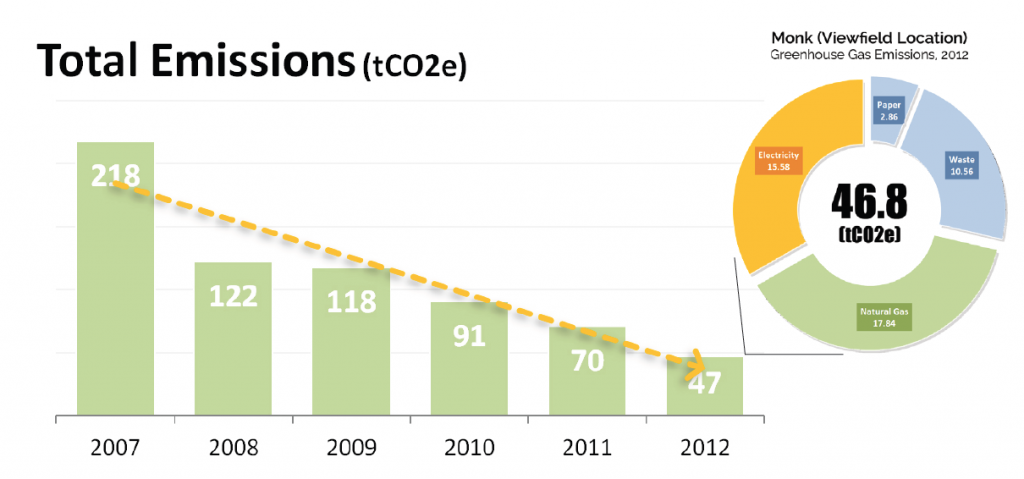 Figure 1: Synergy’s Corporate Social Responsibility Report for their client Monk Office, a company that reduced their total emissions by 79% between 2007 and 2012.
Figure 1: Synergy’s Corporate Social Responsibility Report for their client Monk Office, a company that reduced their total emissions by 79% between 2007 and 2012.
Since then, Jill and her team have worked with dozens of other companies from a wide range of industries including The Bay Centre, The Village Restaurants, Eagle Wing Whale Watching Tours, Cascadia Liquor Stores, Canoe Brewpub, Big Wheel Burger, Habit Coffee, and Monk Office. Jill has also been involved in the design and direction of many local non-profits such as the Food Eco District Restaurant Society, an organization of sustainable restaurants in Victoria, the Vancouver Island Green Business Certification program, a sustainability certification program used to evaluate and verify environmentally friendly businesses, Synergy Sustainability Institute, the non-profit branch of Synergy Enterprises that develops sustainability initiatives, and she launched the Vancouver Island Green Economy Hub website to help people find companies and initiatives working to build a green economy on the island. In addition, the proceeds from her two books, Greening Your Office: Strategies That Work and Greening Your Community: Strategies for Engaged Citizens, go to supporting local environmental non-profits.
Synergy’s innovative and enthusiastic approach to creating a green economy in B.C. has helped dozens of local companies reduce their impact on the environment while being mindful of their bottom line. Using data and metrics to quantify a business’s operating practices and their potential for change, Jill and her team take a business perspective to environmentalism. “We appreciate a business’ constraints and work within them,” Jill said.
Transitioning to a green economy may be a daunting concept, but Synergy and their clients are proof that it is not only possible, it’s already happening.
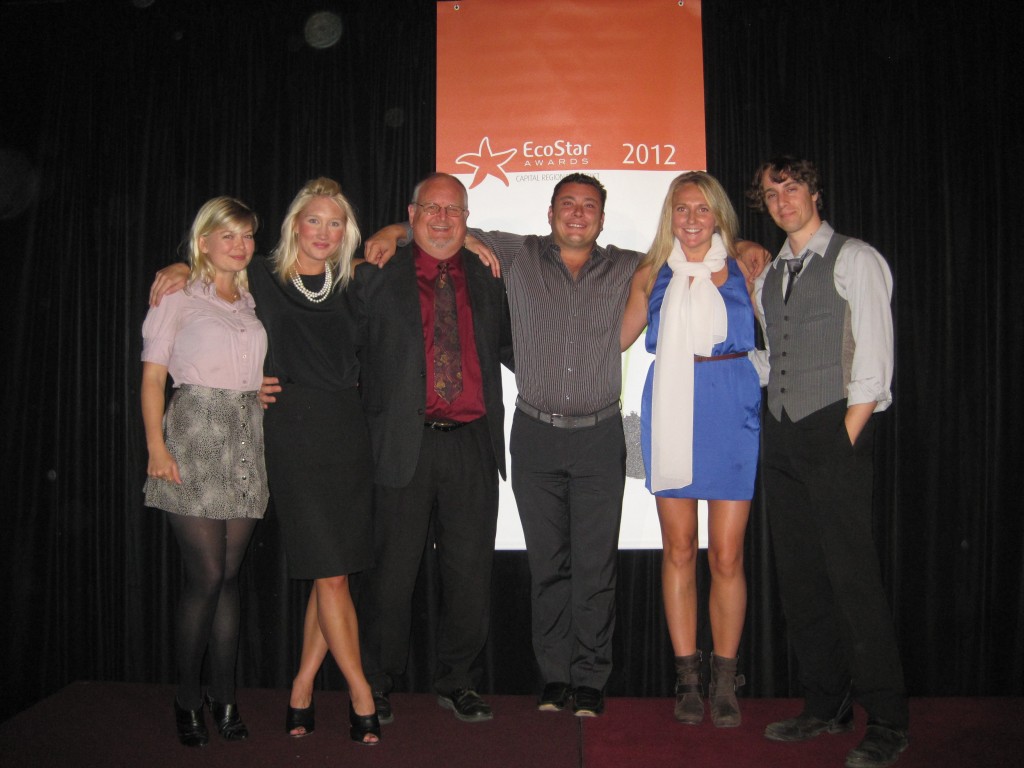 Figure 2: Jill, far left, at the 2012 Eco Star Awards with Synergy’s clients Agenda Office Interiors and Oughtred Coffee & Tea.
Figure 2: Jill, far left, at the 2012 Eco Star Awards with Synergy’s clients Agenda Office Interiors and Oughtred Coffee & Tea.
The staggering importance of a little fish you probably haven’t heard of
If you look at the base of the B.C. marine ecosystem, you’ll find a funny little fish with a lot of names – eulachon, oulachon, oolichan, hooligan, ooligan, candlefish. This species is critically important to the viability of numerous other species in our coastal waters, but has been quietly plummeting, with stocks down by ~98%. While economical, effective, and simple solutions to environmental crises may be few and far between, scientists in Oregon seem to have found an answer to the plight of the eulachon. The results are preliminary, but promising and word is spreading quickly through the fishing industry. To understand why this innovative research is so exciting and encouraging, we start near the bottom of the marine food chain with an examination of a fish of staggering importance.
Eulachon, a species of smelt that spawn in a limited number of rivers on the West Coast, spend most of their three-year life cycle in the marine environment where, much like herring, they play a pivotal role in sustaining the coastal food chain. As a forage fish, eulachon are a foundational species that feed hundreds of different types of animals. From salmon to marine birds, lingcod to killer whales, sea lions to eagles, nearly every marine animal in BC relies on forage fish as principal aspect of their diet.
 Eulachon returning to spawn in the Columbia River. Photo by Sam Beebe, @sbeebe, CC-BY-2.0
Eulachon returning to spawn in the Columbia River. Photo by Sam Beebe, @sbeebe, CC-BY-2.0
Eulachon are vitally important to First Nations’ culture too; harvests are used for food, social, and ceremonial purposes. Eulachon’s high oil content has made them an incredibly valuable source of nutrients for coastal communities – it also means they’ll burn like a candle if lit on fire, which, logically enough, has earned them the name “candle fish.” For thousands of years, Coastal First Nations rendered eulachons into a grease, the health benefits and longevity of which made it a staple aspect of their diet. It was a coveted commodity traded between communities and carried in cedar boxes across well-trodden “grease trails” – the most famous of which stretches from Bella Coola to Quesnel.
 Audry Duncan from the Haisla Nation setting up eulachon in a smoker. Photo by Sam Beebe, @sbeebe, CC-BY-2.0
Audry Duncan from the Haisla Nation setting up eulachon in a smoker. Photo by Sam Beebe, @sbeebe, CC-BY-2.0
Although there are still a few rivers, such as the Klinaklini and Kingcome that have strong runs, the eulachon population coast-wide in British Columbia is estimated to have declined by 98 per cent.
As a result, the Committee on the Status of Endangered Wildlife in Canada has listed the Fraser River eulachon population as endangered, the Central Pacific Coast population as endangered, and the Nass/Skeena Rivers population as a species of special concern.
Despite their ecological and cultural importance, there are significant knowledge gaps about eulachon’s basic biology, migration routes, and historical spawning patterns. Unlike salmon, which are studied extensively, eulachon have little direct commercial market value (none currently as the fishery is now closed – though at one point there were active eulachon fisheries on the Fraser, Nass, Skeena, Klinaklini, and Kingcome Rivers). Intrinsically and indirectly, of course, they are invaluable and feed countless other market species. Given the constrained level of scientific attention given to eulachon, the Department of Fisheries and Oceans Canada (DFO) says it is difficult to conclusively pin-point the cause of their population crash. Instead, their decline has been linked to a variety of activities, such as the marine transportation of oil, natural gas, and toxic chemicals, estuary alteration, shoreline development, industrial runoff, agricultural pollution, trawl fisheries, and forestry activity.
According to recent egg and larval surveys in the Fraser River, DFO reports eulachon abundance as being at an all-time low. Considering the diversity between localized pressures, however, DFO notes that it is “unlikely that such threats would explain the nearly synchronous coast-wide decline of eulachon that has occurred.”
Though certain threats, it is worth noting, have been more pervasive and persistent. Many believe that the shrimp trawl fishery, for example, is responsible for much of the eulachon collapse.
Eulachon are prone to getting caught in mid-water and bottom nets trawling for other species, like the ones used to harvest shrimp. Virtually every eulachon that hits the deck of a fishing vessel will die, according to DFO’s report, and another 60-70% of the fish who escape through the net will be killed as “collateral damage”.
Monitoring indicates that in‐season eulachon bycatch estimates have decreased over time, dropping from 22,406 pounds in 2001 to 8,818 pounds in 2005, and less than 2,205 pounds since 2006. It is hard not to speculate, however, that the reason fewer eulachon are being caught in shrimp nets is because there are fewer of them around to begin with, as indicated by this DFO graph from 2007.
 Fraser eulachon spawning stock biomass from 1995 to 2007 estimated by egg and larval survey at Fraser sampling locations.
Fraser eulachon spawning stock biomass from 1995 to 2007 estimated by egg and larval survey at Fraser sampling locations.
A population dynamics model conducted by DFO for the Fraser river eulachon run indicated that even a small removal or increased mortality rate (5t of the weakest cycle line) would significantly impair any potential for recovery. “Given the large uncertainty regarding magnitude of threats to the Eulachon,” the report continued, “minimal allowable harm should be permitted at this time, and be reduced below current levels as much as possible.”
DFO also says that “climate change effects may impact both the marine and freshwater habitats.” The exceptionally large and warm expanse of water currently stretching across the North Pacific Ocean is, unfortunately, making this look quite likely. “Right now it’s super warm all the way across the Pacific to Japan,” said Bill Peterson, an oceanographer with NOAA’s Northwest Fisheries Science Center in Newport, Ore. Not since records began has the region of the North Pacific Ocean been so warm for so long, the Northwest Fisheries Science Center reported. “The warm expanse has been characterized by sea surface temperatures as much as three degrees C (about 5.4 degrees F) higher than average, lasting for months, and appears on large- scale temperature maps as a red-orange mass of warm water many hundreds of miles across.”
 Image from Northwest Fisheries Science Center illustrating the expanse of warm water stretching across the Gulf of Alaska and Bering Sea.
Image from Northwest Fisheries Science Center illustrating the expanse of warm water stretching across the Gulf of Alaska and Bering Sea.
The mistreatment of eulachon stocks in B.C. is an environmental and cultural tragedy, to say the least. Forage fish like herring and eulachon form a pillar that holds up the entire coastal ecosystem, yet for decades they have been hastily killed as bycatch and chucked overboard by the tonne, with little consideration for the consequences.
Yet all is not lost. Scientists in Oregon seem to have hit upon an effective and low-cost solution – they are lighting up the shrimp nets. Funded by a grant from the National Oceanic and Atmospheric Administration, researchers attached 10 green Lindgren-Pitman lights to the fishing line of each net. After 42 tows, the researchers found that the illuminated net caught 90% fewer eulachon than the regular trawl gear, but roughly the same amount of shrimp.
Image from NOAA, Left: A pink shrimp haul without the use of LED lights shows Eulachon bycatch. Right: The results of LED lights hung on the trawl lines. LEDs have significantly reduced bycatch of threatened Eulachon as well as other fish by showing where the fish can escape the net.
Specific light placement is key, though, as some variations actually increased bycatch levels. “The new technique was shown to be effective when the lights were placed four feet apart across the center third of the footrope, an area near the bottom of the trawl that keeps the net open as it moves through the water. Researchers caution shrimpers to not place the lights around the rigid-grate bycatch reduction device, or BRD, as it actually decreased the effectiveness of the BRD for eulachon,” the NOAA report reads.
Results were so dramatic, the researchers immediately encouraged all shrimpers to start testing the technique. Within two months nearly every vessel across the border was using the illuminated net method, reporting very large reduction in bycatch of small demersal fish, but eulachon in particular.
When contacted to ask if the B.C. shrimping industry was planning on adopting a similar bycatch reduction strategy, DFO said they are waiting to see the published results from the Oregon studies but they have had “initial discussions with the B.C. trawl industry and they have expressed an interest in testing this technique. Further discussion is expected.”
Eulachon are of vital importance to the marine ecosystem on the West Coast, and to First Nations. Urgent action needs to be taken to help these stocks recover. And a good start might be as simple as switching on some underwater lights.
Banner Image: Eulachon habitat at Kitamaat Village beach. Photo by Sam Beebe, @sbeebe, CC-BY-2.0

